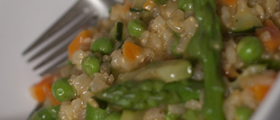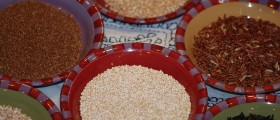
Introduction
Rice is highly beneficial to human health, since it controls the levels of blood sugar provides the body with vitamin B1, protects against dysentery and heart disease and supplies with the necessary energy. Nowadays, rice is mainly consumed in cereals and there are over 40 thousand varieties available worldwide, but whole grain rice and white rice are the dominant sorts used. Whole grain rice is more nutritious since it is not processed much, while the value of white rice is depleted by removing the bran. As longer the grains are typical of Indian and Chinese culinary traditions, while Western cuisine relies on short or medium sized grain.
Health benefits of rice
When speaking of the advantages of rice consumption, first of all, it should be mentioned that it abounds in vitamins and minerals including vitamin D, iron, calcium, niacin, fiber, thiamine and riboflavin. It also provides the body with the energy needed for everyday life, since it is comprised of carbohydrates, but an important benefit of its composition is the absence of cholesterol, fats and sodium, the latter making it suitable for people with high blood pressure.
Rice is also used in skin care to heal skin illnesses, and ayurvedic medicine uses rice water for the treatment of inflamed skin. In addition, rice is beneficial to the bowels, since it contains resistant starch which remains undigested until it reaches the intestine. It also promotes bowel movement by supporting the development of useful bacteria. The Chinese use rice to treat stomach diseases, indigestion and improve appetite, while the husk of the rice helps cure dysentery. Chronic constipation sufferers can also benefit from eating rice, because the insoluble fiber in rice easily travels out of the bowels.
Rice is believed to prevent some illnesses. By reducing cholesterol, antioxidants found in rice bran oil reduce the risk of heart disease. Alzheimer’s disease can be prevented thanks to neurotransmitter nutrients found in rice. Many forms of cancer can be avoided by consuming this fiber-rich food. Brown rice is favored over white rice for its high contents of fiber, and people suffering from diabetes benefit more from brown rice because of its lower glycemic index.
Daily cups of brown rice can provide the body with almost all the manganese it needs to derive energy from protein and carbohydrates. Brown rice ensures the normal operation of the human nervous system and it optimizes the secretion of sex hormones. For all these reasons, the scientists of the International Rice Research Institute in Philippines are trying to work out the best way to improve the nutritional value of rice, so that people around the globe would benefit from its consumption even more.




_f_280x120.jpg)












Your thoughts on this
Loading...